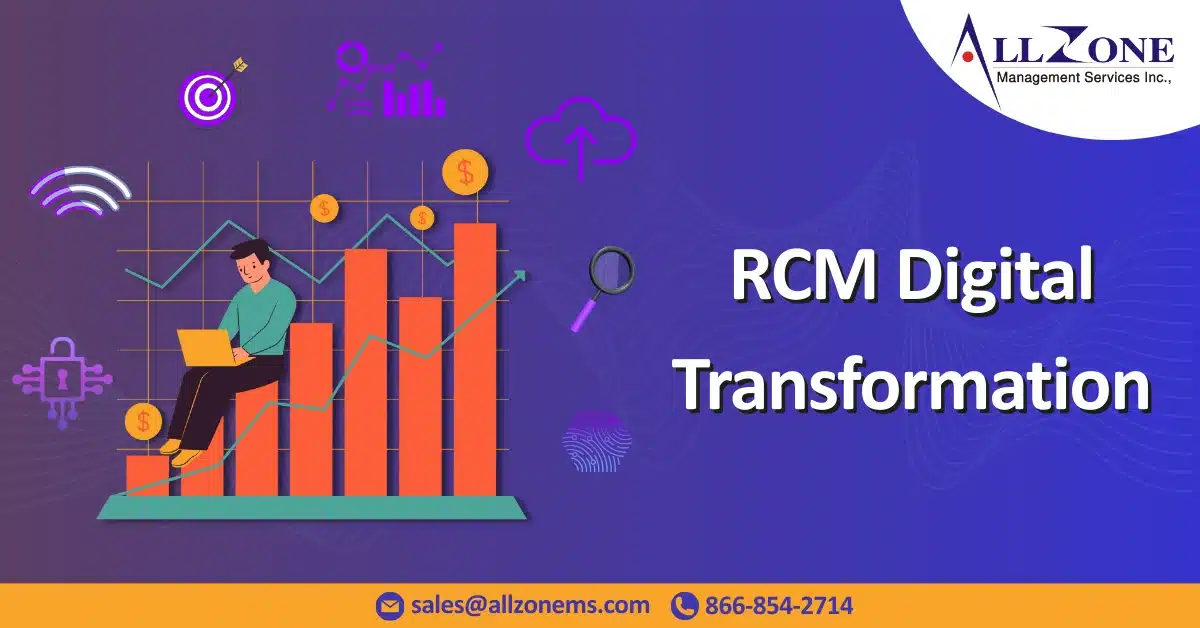Revenue Cycle Management (RCM) has undergone significant RCM Digital Transformation over the past decade, revolutionizing how healthcare providers and organizations manage their financial processes. In 2025, staying ahead in RCM requires more than just automation; it demands a holistic approach that integrates artificial intelligence (AI), machine learning (ML), data analytics, and patient-centric solutions to enhance efficiency, compliance, and profitability.
The Evolution of RCM: A Brief Overview
Traditionally, RCM was a labor-intensive process involving multiple touchpoints, from patient registration and insurance verification to coding, billing, and collections. Manual errors, administrative inefficiencies, and claim denials led to revenue losses and increased operational costs. With the advent of digital solutions, RCM Digital Transformation has dramatically shifted the landscape, enabling real-time processing, predictive analytics, and intelligent automation.
Today, RCM is no longer just about billing; it’s about optimizing financial workflows, improving patient experience, and ensuring regulatory compliance. In 2025, healthcare organizations must adopt cutting-edge digital strategies to remain competitive in an ever-evolving industry.
Key Trends Driving RCM Digital Transformation
AI and Machine Learning for Smarter Revenue Cycle Processes
AI and ML are at the forefront of RCM innovation, streamlining various processes such as:
- Automated Claim Processing: AI-driven solutions can detect errors before submission, reducing denials and improving first-pass acceptance rates.
- Predictive Analytics: ML algorithms analyze historical data to predict claim outcomes, enabling proactive resolution of potential issues.
- AI Chatbots and Virtual Assistants: These tools enhance patient engagement by answering billing queries, scheduling payments, and providing real-time assistance.
Robotic Process Automation (RPA) for Efficiency
RPA eliminates repetitive, time-consuming tasks by automating:
- Patient data entry and insurance verification
- Claims scrubbing and submission
- Payment posting and reconciliation
- Denial management and follow-up
By reducing human intervention in these processes, RPA enhances accuracy, speeds up workflows, and cuts operational costs.
Cloud-Based RCM Platforms
Cloud technology has revolutionized data management in healthcare. Cloud-based RCM solutions offer:
- Scalability: Organizations can expand their RCM capabilities without significant infrastructure investments.
- Interoperability: Seamless integration with EHRs, practice management systems, and payer portals.
- Enhanced Security: Compliance with HIPAA and other regulatory standards to protect patient data.
Data Analytics for Better Decision-Making
Big data analytics in RCM enables healthcare providers to:
- Identify trends in patient billing and collections
- Optimize payer negotiations and reimbursement rates
- Monitor key performance indicators (KPIs) for continuous improvement
- Reduce fraud and financial risks through predictive modeling
Telehealth and Remote Patient Monitoring (RPM) Integration
With the rise of telehealth and RPM, billing and reimbursement models have evolved. Healthcare providers must:
- Implement digital billing solutions for virtual visits
- Ensure accurate documentation and coding for telehealth claims
- Automate eligibility verification for remote care services
Personalized Patient Financial Experience
Patients today expect transparency and flexibility in billing. Digital RCM transformation focuses on:
- Providing online payment portals and mobile payment options
- Implementing automated payment reminders and flexible installment plans
- Enhancing cost estimation tools for upfront pricing transparency
Blockchain for Secure Transactions
Blockchain technology is emerging as a game-changer in healthcare RCM by offering:
- Tamper-proof patient records and financial transactions
- Smart contracts for seamless payer-provider agreements
- Enhanced claim adjudication processes
Steps to Implement a Successful RCM Digital Transformation Strategy
Step 1: Conduct a Comprehensive RCM Assessment
Evaluate current RCM processes to identify inefficiencies, revenue leakages, and compliance risks. Perform gap analysis to determine areas for improvement.
Step 2: Set Clear Digital Transformation Goals
Define measurable objectives such as:
- Reducing claim denial rates by X%
- Increasing patient payment collections by Y%
- Enhancing claim processing speed by Z%
Step 3: Choose the Right Technology Partners
Select vendors that offer scalable, compliant, and interoperable RCM solutions tailored to your organization’s needs.
Step 4: Train Staff and Encourage Adoption
Ensure that employees understand how to use new digital tools effectively. Conduct training sessions and provide ongoing support.
Step 5: Monitor Performance and Optimize Continuously
Leverage data analytics to track performance metrics and make data-driven adjustments to improve efficiency and revenue outcomes.
Challenges in RCM Digital Transformation and How to Overcome Them
1. Resistance to Change
Solution: Foster a culture of innovation through leadership support, training, and employee involvement in decision-making.
2. Data Security and Compliance Risks
Solution: Implement robust cybersecurity measures, ensure HIPAA compliance, and conduct regular audits.
3. Integration with Legacy Systems
Solution: Choose interoperable solutions that seamlessly integrate with existing EHRs and practice management systems.
4. High Initial Investment Costs
Solution: Opt for cloud-based and subscription-based models to reduce upfront costs and improve ROI over time.
The Future of RCM: What’s next?
By 2025 and beyond, we can expect:
- Greater adoption of AI-driven predictive analytics
- Expansion of blockchain applications in healthcare finance
- Enhanced patient financial engagement strategies
- Increased reliance on cloud-native RCM platforms
- More stringent regulatory requirements shaping digital transformation efforts
RCM digital transformation is no longer an option but a necessity for healthcare providers aiming to stay competitive in 2025. By leveraging AI, RPA, data analytics, and cloud technology, organizations can optimize financial operations, enhance patient experiences, and ensure compliance with evolving regulations.
As the healthcare landscape continues to shift, those who proactively embrace digital innovation in RCM will lead the way toward financial stability, operational efficiency, and superior patient care. Now is the time to invest in the future of RCM—because staying ahead means staying digitally empowered.

